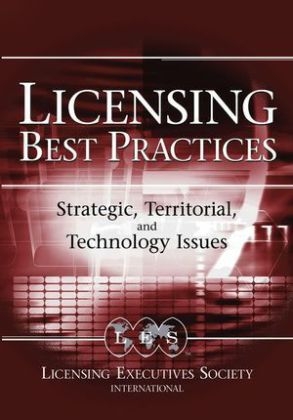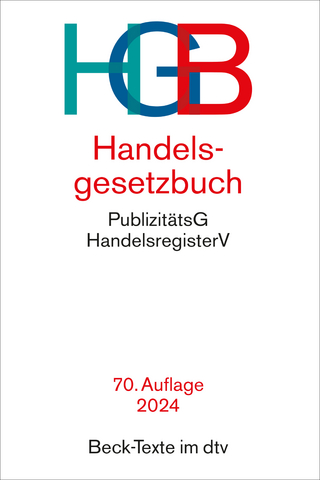
Licensing Best Practices
John Wiley & Sons Inc (Verlag)
978-0-471-74067-4 (ISBN)
"The LESI Guide to Licensing Best Practices, to which I was proud to contribute, has found solid acceptance in the international licensing community. The new volume of Licensing Best Practices maintains this high standard. It was designed to be complementary to its predecessor and broadens the scope of the scholarship. Standing alone, Licensing Best Practices is a valuable source of contemporary information. In combination with The LESI Guide to Licensing Best Practices, we have a very valuable source of insights and practical knowledge."
—Heinz Goddar Partner Boehmert & Boehmert "Few if any other intellectual property references lay the required geographic foundation for the scientific, business, and legal issues presented. Goldscheider and Gordon demonstrate that tech transfer occurs in a global arena. The book lives up to its title: Licensing Best Practices."
—James E. Malackowski President & CEO, Ocean Tomo, LLC past president, LES-USA & Canada
An invaluable complement to the field's acclaimed book on licensing best practices
Spanning the globe, from Scandinavia to Japan and Mexico to Korea, Licensing Best Practices provides a comprehensive and user-friendly resource for professionals in licensing and technology management. Featuring contributions from some of the most highly regarded LESI professionals, this definitive guide includes detailed discussions on some of the hottest topics in licensing, including:
Licensing and Technology Transfer to China
Software Licensing as a Driver of the Indian Economy
Secrets of Successful Dealmaking in Asia
Licensing in Scandinavia-Home of Entrepreneurial Inventors, Industrialists, and Philanthropists
Global Innovation and Licensing Opportunities on the Internet
Energy and Environment Driving Technology and Licensing
Licensing Nanotechnology
Assuring Royalty Compliance in High Technology Licensing
Intellectual Property Allocation Strategies in Joint Ventures
Applications of Game Theory to IP Royalty Negotiations
ROBERT GOLDSCHEIDER conceived and edited the first volume and is Coeditor of this book. He is an attorney and pioneer of the profession of technology management consulting. He heads the International Licensing Network, which was formed in 1975. He has also established precedence as an expert in litigation and has testified over fifty times. Mr. Goldscheider is the author of two treatises on licensing issues that are regularly update and has published over thirty articles on licensing-related subjects. He has been active in LES since 1967, has regularly lectured at LES and other meetings around the world, and believes he has taught more people about licensing than anyone alive. ALAN H. GORDON has thirty-five years' experience in the practice of intellectual property law. He established Alan H. Gordon & Associates after having been aprincipal/partner of Fish & Richardson, P.C.; a partner/shareholder with Arnold, White & Durkee (now Howrey, LLP); and an associate with Burns, Doane, Swecker & Mathis (now Buchanan Ingersoll P.C.). He earned his BS in engineering from Columbia University in New York City and his JD (with Honors) from The George Washington University in Washington, D.C. He is a registered patent attorney in the U.S. and a registered patent agent in Canada and the Philippines. He is an author and frequent lecturer in the intellectual property area and has appeared numerous times as an expert witness in patent, trademark, trade secret, and licensing cases. Mr. Gordon has served as a local chapter chair, committee chair, trustee, vice-president, and secretary of the Licensing Executives Society (USA & Canada).
Preface xv
About the Editors xxi
About LESI xxiii
Part 1 TERRITORIAL COMMENTARIES
1 Licensing and Technology Transfer to China: A Roadmap 3
by Henry Beck and Xichun (Catherine)
Pan
Introduction 3
“Free Riding” Past and Present 3
China Joins the World Economy 4
Intellectual Property Protection and Enforcement 5
Intellectual Property Rights Have Little Extraterritorial Force 5
International Treaties and Conventions; Trade Remedies 5
China’s Intellectual Property Protection Regimes 7
Enforcement of Intellectual Property Rights and the Threat of Trade Sanctions 9
U.S. and Chinese Export and Import Control Regulations: “Outbound” and “Inbound” 17
U.S. Export Control Regulations 17
China’s Regulations for Technology Imports and Exports 22
Concluding Thoughts 24
2 Software Licensing as a Driver of the Indian Economy 27
by Rani Boazz and Subramaniam Vutha
Introduction 27
Background 27
The Scope of the Chapter 29
The Economic Impact of Software Licensing in India and Current Business Trends 29
The Legal Framework for Software Licensing in India 32
Copyright Law 32
Contracts 32
Trade Secrets Law 32
Patent Law 33
Taxes and Duties 33
Reproduction of Software in India 34
Insights into the Special Needs and Legal Requirements of the Indian Software Market 34
Outlook for the Indian IT Industry 35
3 The Industrialization of Korea (1962 to 2002) from the Patenting and Licensing Perspective 37
by Yoon Bae Kim
Introduction 37
Overview of the Korean Economy and Trends in Technological Development According to Historical Dates 38
Before 1962 (Japanese Colonial Rule and the Korean War) 38
From 1962 to 1991 (National Economic Development Plans) 39
From 1992 to the First Half of 1997 (between the Post-Economic Development Plan and the Foreign Currency Crisis) 42
From the Second Half of 1997 to 2002 (Foreign Currency Crisis and Innovation-Led Economic Growth) 43
Key Indicators of the Korean Economy 44
Key Indicators of Korea’s Macrotechnological Capability 45
The Impact of the Korean Patent System and Licensing
Regulation on Korea’s Technological Development 47
The Patent System 48
Formulation of Law on Protection of Computer Program Copyright 49
Licensing Regulation 50
Patenting and Licensing Trends by Industry 52
Chemicals (Petrochemicals and Fine Chemicals) 53
Shipbuilding 54
Steel and Iron Manufacturing 55
Automobiles 56
Aerospace 56
Semiconductors 57
Electronics and Telecommunications 58
Conclusions 59
4 Japan on Its Way to Revitalization 63
by Jinzo Fujino
Introduction 63
Overview of Technology Trade 64
Shifting to a New Knowledge-Based Economy 65
Overhauling Japan’s Intellectual Property Scheme 66
Intellectual Property Promotion Plan 2004 67
Creation of New Inventions 67
Protection of Intellectual Properties 68
Enhancing the Utilization of Intellectual Properties 69
Promotion of the Contents Business 70
Development of Human Resources in the Intellectual Property Arena 70
Protection from Foreign Counterfeits 70
Conclusions 71
Commentary 72
5 Secrets of Successful Dealmaking in Asia 75
by Dennis Unkovic
Introduction 75
Factors Influencing Asian Business Deals 76
Thailand 77
Malaysia 78
Singapore 79
Indonesia 81
Asian Diversity 82
6 Modern Mexican Laws Governing Intellectual Property, Licensing, Antitrust, R&D, and Inventors’ Rights 83
by Oscar M. Becerril and Hector E. Chagoya
Introduction 83
The Mexican Antitrust Law 84
The North American Free Trade Agreement (NAFTA) 86
The Freedom-to-Research Issue 87
Benefiting from the Mexican Industrial Property and Licensing System: Some Hints 88
Franchise Contracts 89
Licensing in the Pharmaceutical Sector 89
Licensing of Biotechnology 90
Licensing of Copyrights 90
R&D Contracts 91
The Mexican Employees’ Inventions System: Another Reason to Consider Mexico for R&D Activities 92
Remuneration to Employees for Their Inventions under Mexican Law 93
Patenting Controversial Technologies in Mexico 94
Computer-Implemented Technologies 94
Biotechnology 94
Conclusions 95
7 Licensing in Scandinavia: Home of Entrepreneurial Inventors, Industrialists, and Philanthropists 99
by Robert Goldscheider and Jonas Gulliksson
Introduction 99
Scandinavian Creativity 99
Finland’s Impact 100
Success Factors 101
“Scandinavian-Bred” Technology 102
Karl V. Palmaer 102
Haldex All Wheel Drive System 103
Ole-Bendt Rasmussen 104
Conclusions 106
Part 2 SCIENTIFIC ISSUES
8 Global Innovation and Licensing Opportunities on the Internet 111
by John G. Palfrey, Jr.
Introduction 111
The Digital Media Revolution 112
The First Clash: Digital Music 112
The First Success: Apple’s iTunes 113
Globalization and the Internet 114
Outsourcing of Software Development Services 114
Open Source Software Development 115
Other Global Effects of the Information Technologies Boom 116
Looking Ahead: Web Logs, Syndication, and Aggregation 117
The Phenomenon of Web Logs 118
Really Simple Syndication 119
Conclusions 120
9 Energy and the Environment: Driving Technology and Licensing 123
by Walter G. Copan
Energy and Human Progress 123
Energy in the Petroleum Age 124
The Environment and Sustainability 127
Global Climate Change and Emissions Trading Markets 128
A Triple Bottom Line 130
New Technologies Driving Technology Transfer 130
Energy Efficiency and Resource Conservation 130
Green Buildings 131
Energy Efficiency and Emissions Control for Transportation 132
Electric and Hybrid Vehicles 133
Hybrid Vehicle License Strategies 133
Evolution of Fuels 134
Natural Gas Fuel 135
Biofuels 135
Distributed Power 136
Power Plants 137
Renewable Energy 137
The Hydrogen Economy 139
Fuel Cells 140
Venture Capital and Institutional Investment 140
The Role of Licensing in the Energy World 142
New Value Options for Licensing in Energy and the Environment 143
Risk Management Value 145
Emissions Reduction Value 145
Direct Policy Incentives 145
Reduced Resource Use 146
Corporate Social Responsibility 146
Societal Economic Benefits 146
Technology Transfer Value 147
Acknowledgments 147
10 Essentials of Licensing Biotechnology, Nanotechnology, and Other Cutting-Edge Technologies 151
by Manya S. Deehr and Mary Ann Stretch
Introduction 151
Definitions 152
Improvements 153
Field of Use 154
License Grant 154
Information, Data, and Results 155
Source of Intellectual Property: Federal Funding and Academic Contributions 156
License or Divestiture 158
Patent Sections 159
Conclusions 160
11 The Big Picture: Nanotechnology Impacts Everyone 163
by Robert C. Shaddox
Introduction 163
Licensing Nanotechnology 164
Overview 164
Definitions 165
Ownership/Encumbrances 166
Timing 167
Technology Licensing 168
Overview 168
Definition of Licensed Property/Licensed Products 168
Granting Clause 169
Termination Provisions 169
Consideration 169
Territory or Field of Use 170
Patent Protection 172
Infringement Actions 173
Confidentiality 175
Assignment and Sublicense 175
Conclusions 176
12 Ensuring Royalty Compliance in High-Technology Licensing 179
by Arthur M. Nutter
Introduction 179
Intellectual Property versus Real Property 179
High-Technology Licensing Programs 180
Phase One 180
Technical Investigations: Treasure Hunting 182
Courtroom Discovery versus Reverse Engineering 182
Analyzing Semiconductors 183
Microcontroller-Based Product Analysis 184
Black Box Testing 184
Dumb Patents 185
Software 186
New Laws in the United States 186
Open Source Strategies 187
Part 3 BUSINESS, LEGAL, AND PROFESSIONAL ISSUES
13 Licensing Challenges Encountered by a Multinational Law Firm 191
by Michael A. Epstein
Introduction 191
Knowledge Management 192
Maintaining Geographical Spread 193
Providing Subject Matter Diversity 194
Utilizing Litigation Expertise 195
Preserving Experience as to Past Deals 197
Leveraging Relationships 198
Conclusions 198
14 Small Companies’ View of Licensing 201
by Norman A. Jacobs
Introduction 201
Acquiring Technology (Licensing In) 202
Granting Technology Rights (Licensing Out) 203
Identify Potential Licensees 204
Overcome the Confidential Disclosure Barrier 205
Consider a Joint Development Program 205
Define Fields of Use 206
Consider Novel Royalty Structures 206
Use a “Distress” License to Increase Product Sales 207
Determining the Value of Technology 207
Ensuring Licensee Diligence 208
Conclusions 209
15 Managing Intellectual Property Allocation in Joint Ventures 211
by Ron Laurie
Introduction 211
JV Structural Models 211
The Contractual Model 212
The Entity Model 212
The Two-Stage Model 213
Intellectual Property Allocation in General 214
The Default Allocation Paradigm: Joint Ownership 214
Preferred Intellectual Property Allocation Strategies 217
Application of Intellectual Property Allocation Strategies to the JV Structural Models 218
The Contractual Model 218
The Entity Model 220
The Two-Stage Model 222
Exit Strategies 226
Merger or Acquisition of the JV Entity 226
Dissolution of the JV Entity 226
Conclusions 228
16 Experience in Norway with Strategic Alliances as a Work Form When Commercializing Technology 231
by Håkon Haugen and Tor Oppedal
Introduction 231
The Particle Business in DYNO—and Beyond 231
From Idea to Market 232
Critical Success Factors for a Company Based on New, Advanced Technology 233
Technology 233
Infrastructure 233
Products 233
Market Apparatus 233
Alternative Strategies 234
DYNO’s Particle Development: A Strategic Evaluation 234 Establishment and Execution of Strategic Alliances:
A General Evaluation of Relationships 234
Choice of Partner 235
Establishing the Alliance 235
Administration and Leadership of Joint Activities 236
Experiences of Dyno Particles: Examples 237
Dynal Biotech ASA: Biomagnetic Separation 237
Pharmacia Biotech AB: Chromatographic Purification of Biomaterial 238
General Conclusions Based on Our Experiences 239
17 Application of Game Theory to Intellectual Property Royalty Negotiations 241
by John C. Jarosz and Michael J. Chapman
Introduction 241
Usefulness of Game Theory 241
Bargaining Basics 243
A Simple Bargaining Game 244
An Intellectual Property Licensing Game 245
The Nash Bargaining Solution (NBS) 247
Description 247
Extension to Licensing 252
Estimation of NBS 258
Disagreement Profits (di ) 259
Total Profits (∏) 260
Bargaining Power (α) 260
Conclusions 263
18 Administration and Auditing of License Agreements to Promote Control and Harmony 267
by Margaret (Peggy) Moizel
Introduction 267
Management Plan for Maintaining Licensee Agreements 267
Negotiation Steps 268
Inventory of Agreements 270
Remuneration Calculation 270
Conclusions 272
Suggested Reading List 273
Index 279
| Erscheint lt. Verlag | 9.5.2006 |
|---|---|
| Verlagsort | New York |
| Sprache | englisch |
| Maße | 188 x 259 mm |
| Gewicht | 767 g |
| Einbandart | gebunden |
| Themenwelt | Recht / Steuern ► EU / Internationales Recht |
| Recht / Steuern ► Wirtschaftsrecht ► Handelsrecht | |
| Recht / Steuern ► Wirtschaftsrecht ► Urheberrecht | |
| Wirtschaft ► Betriebswirtschaft / Management | |
| ISBN-10 | 0-471-74067-5 / 0471740675 |
| ISBN-13 | 978-0-471-74067-4 / 9780471740674 |
| Zustand | Neuware |
| Haben Sie eine Frage zum Produkt? |
aus dem Bereich


